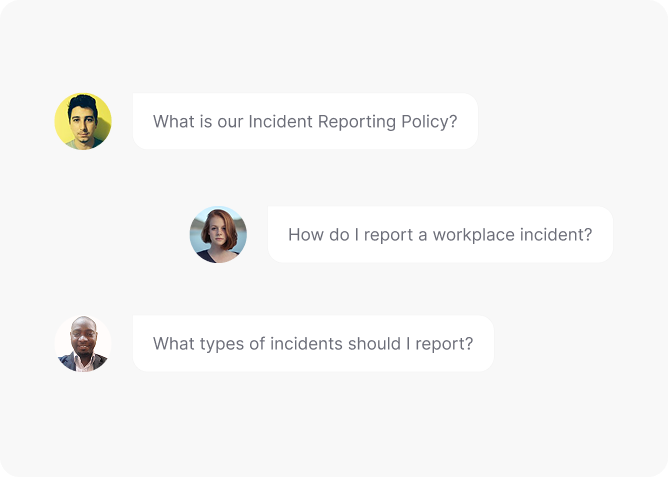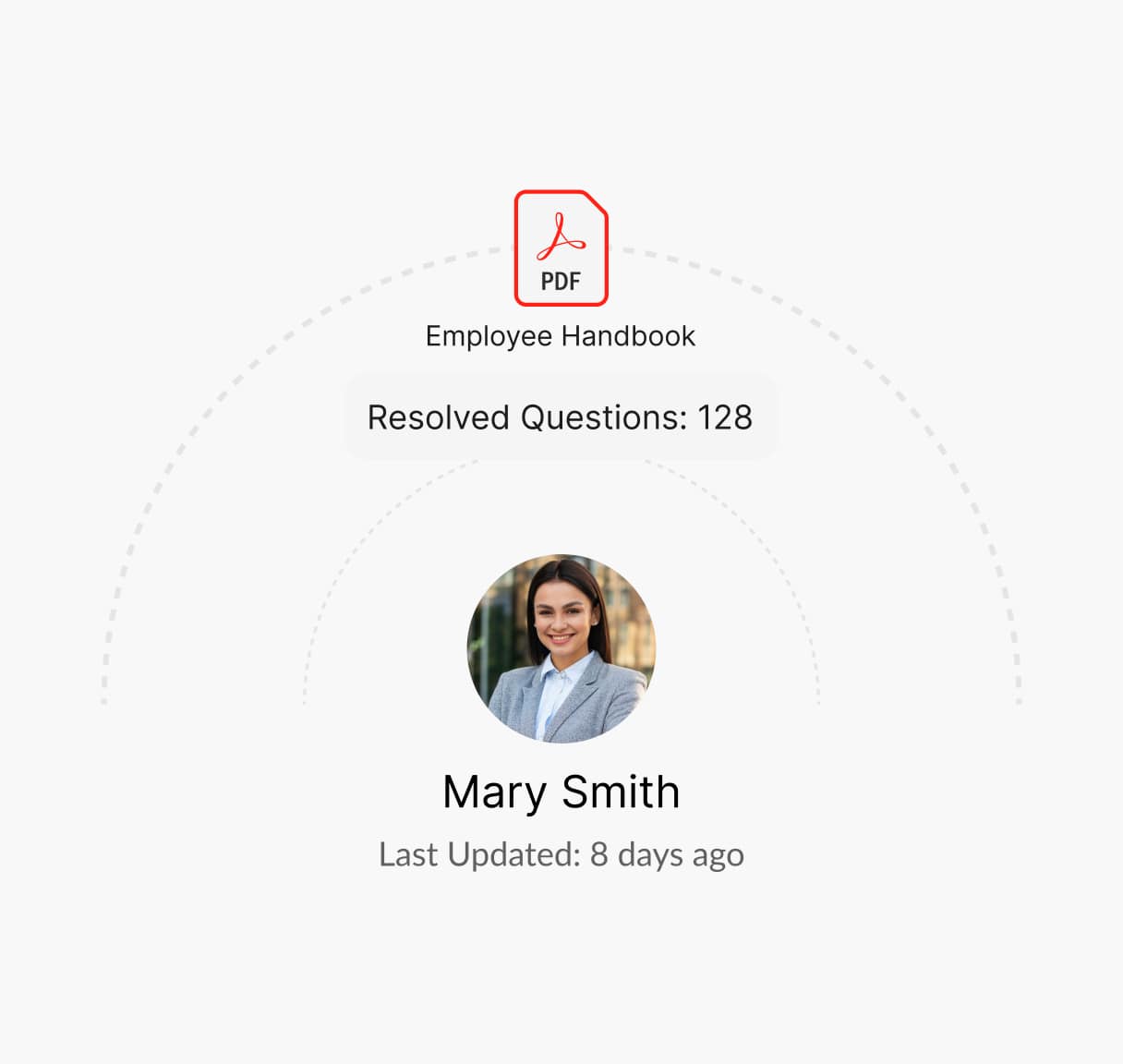Everything You Need to Know About Incident Reporting Policy
Timely reporting of workplace incidents ensures quick resolution and prevention. An Incident Reporting Policy defines reporting procedures, investigation steps, and corrective actions, promoting a safe and accountable work environment.

What is a Incident Reporting Policy?
An Incident Reporting Policy is an HR document that establishes procedures for reporting workplace accidents, injuries, and safety violations. It details reporting channels, documentation requirements, and follow-up actions.
A well-defined incident reporting policy ensures prompt response, compliance, and a safer work environment.
Guidelines for Creating a Incident Reporting Policy
A well-defined incident reporting policy ensures timely reporting, thorough investigation, and proper resolution of workplace incidents. Here’s how to create an effective policy:
Define What Constitutes an Incident
Clearly outline workplace incidents, including safety hazards, harassment, data breaches, and security violations.
Establish a Standardized Reporting Procedure
Provide a structured process, including required forms, reporting deadlines, and whom to notify.
Ensure Confidentiality and Non-Retaliation
Guarantee that employees can report incidents without fear of retaliation or exposure.
Assign Roles for Investigation and Resolution
Specify responsibilities for HR, management, and safety officers in reviewing and addressing incidents.
Implement Training and Awareness Programs
Educate employees on identifying, reporting, and preventing incidents to foster a proactive safety culture.
Monitor, Analyze, and Improve the Policy
Regularly assess incident reports to identify patterns, mitigate risks, and refine workplace safety protocols.
What is Covered in a Incident Reporting Policy?
An effective Incident Reporting Policy should include the following:
Types of Incidents Covered
Define workplace incidents such as injuries, harassment, discrimination, cybersecurity breaches, and operational hazards.
Reporting Process and Required Documentation
Detail how employees should report incidents, including required forms and submission channels.
Roles and Responsibilities of Stakeholders
Specify who handles reports, investigates claims, and ensures corrective action is taken.
Investigation and Resolution Timelines:
Establish expected timeframes for initial review, follow-ups, and final resolution.
Confidentiality and Anonymity Protections
Define measures in place to protect the identity of whistleblowers and ensure privacy.
Follow-Up and Corrective Actions
Outline post-incident procedures such as disciplinary actions, training, or workplace adjustments.
Compliance with Legal and Industry Standards
Ensure alignment with OSHA, labor laws, and other regulatory requirements.
Need help creating an Incident Reporting Policy?
How Winslow helps HR pros save time on responding to incident reporting policy questions
Managing workplace incident inquiries can be time-consuming, but Winslow, your AI-powered HR assistant, simplifies the process:

Instant answers anytime
Winslow ensures your Incident Reporting Policy is always available on Slack, Teams, or email. Employees can instantly access information on reporting procedures, required documentation, and response timelines—ensuring compliance and timely action.
Personalized Support
Winslow instantly answers employee questions, including those about your Incident Reporting Policy, ensuring clarity on confidentiality protections, escalation steps, and follow-up processes.


Analytics and Insights
Winslow tracks policy-related queries, helping HR teams identify trends and common concerns. This data enables organizations to refine their policy, improve reporting channels, and address recurring issues proactively.
Save Time Managing Incident Reporting Policies with Winslow
Handling workplace incidents requires swift action, but responding to policy questions can delay resolution. Winslow instantly answers queries on reporting procedures, required documentation, and investigation timelines—ensuring compliance while reducing HR’s burden.
Frequently asked questions
Have further questions about Winslow, contact us at sales@usewinslow.com
How should HR ensure employees feel safe reporting incidents without fear of retaliation?
HR should establish confidential reporting channels, such as anonymous hotlines or third-party platforms, and implement strict non-retaliation policies with disciplinary actions for violations.
What timeline should HR set for investigating reported incidents?
HR should acknowledge reports within 24 hours, conduct a preliminary review within five days, and resolve cases within 30-60 days depending on complexity.
How should HR handle false or malicious incident reports?
HR should conduct thorough investigations before taking action and have clear penalties for false claims, while ensuring real concerns are still taken seriously.
What training should HR provide to ensure proper incident reporting?
HR should conduct biannual workshops on identifying, documenting, and reporting incidents correctly, using real-life scenarios to improve awareness.
How should HR maintain records of incidents for compliance purposes?
HR should store incident logs in a secure, centralized database, keeping records for at least 5-7 years to comply with legal and audit requirements.”
Additional resources
Device Usage Policy
Managing employee leave effectively is vital for maintaining workforce productivity and compliance....
Learn moreconfidentiality policy
Protecting sensitive information is crucial. A clear Confidentiality Policy outlines guidelines for...
Learn moreclaim reimbursement
Ensuring fair compensation for expenses is key. A clear Claim Reimbursement Policy...
Learn more




